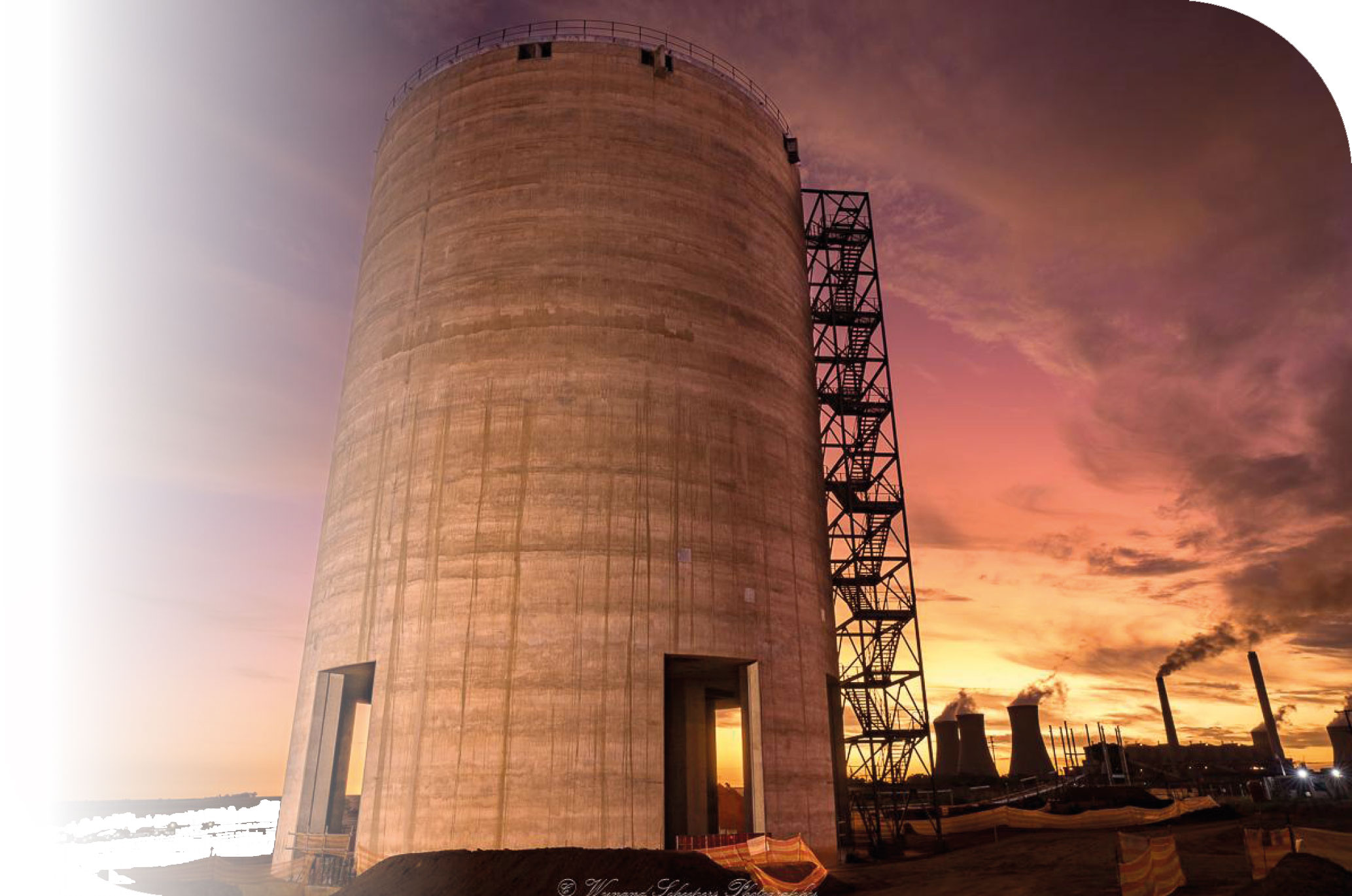Matla Power Station: The Heart Of South Africa's Energy Landscape
What comes to mind when you hear the phrase "Matla Power Station"? If you're like most people, you probably think of one of the largest dry-cooled power stations in the world. That's fair enough. However, there's much more to Matla Power Station than meets the eye. As South Africa's largest coal-fired power station, Matla Power Station is a vital part of the country's energy landscape. It plays a critical role in meeting the country's electricity needs, and it is also a major employer in the Mpumalanga province.
Editor's Note: "Matla Power Station: The Heart Of South Africa's Energy Landscape" published today. This article is important because, here we explained the key features of Matla Power Station, its operations, and its importance to South Africa's energy landscape.
We did some analysis, digging information, made Matla Power Station: The Heart Of South Africa's Energy Landscape, we put together this Matla Power Station: The Heart Of South Africa's Energy Landscape guide to help you make the right decision.
| Key Differences | Matla Power Station |
|---|---|
| Location | Mpumalanga province, South Africa |
| Type | Dry-cooled coal-fired power station |
| Capacity | 3,600 MW |
| Number of units | 6 |
| Year of commissioning | 1984 |
Matla Power Station is a coal-fired power station that is located in the Mpumalanga province of South Africa. It has 6 units and has a capacity of 3,600 MW. Matla Power Station is part of the larger Matla Power Complex, which also includes the Matla Coal Mine and the Matla Ash Dam. Matla Power Station is owned and operated by Eskom, the South African national electricity utility.
FAQ
This section provides answers to frequently asked questions about Matla Power Station: The Heart Of South Africa's Energy Landscape for clear understanding.

Africa’s energy landscape offers significant investment opportunities - Source www.whyafrica.co.za
Question 1: What is the Matla Power Station's significance in South Africa's energy landscape?
Answer: Matla Power Station, one of the significant coal-fired power plants, plays a pivotal role in meeting South Africa's energy demands, contributing a substantial portion to the national electricity grid.
Question 2: What are the key features of Matla Power Station?
Answer: Matla Power Station comprises six generation units with a total installed capacity of 3,600 megawatts. The plant utilizes advanced technology to ensure efficient and reliable power generation.
Question 3: What is the environmental impact of Matla Power Station?
Answer: Matla Power Station adheres to stringent environmental regulations and implements comprehensive mitigation measures to minimize its ecological footprint. The plant employs flue gas desulfurization and electrostatic precipitators to reduce emissions and protect air quality.
Question 4: How does Matla Power Station contribute to the local community?
Answer: Matla Power Station actively engages with the neighboring communities, supporting various initiatives in education, healthcare, and infrastructure development. The plant creates employment opportunities and provides economic benefits for the region.
Question 5: What is the long-term outlook for Matla Power Station?
Answer: Matla Power Station continues to be a vital part of South Africa's energy mix, undergoing regular maintenance and upgrades to maintain its operational efficiency. The plant remains committed to contributing to the nation's energy security and economic growth.
Question 6: Is Matla Power Station involved in any sustainability initiatives?
Answer: Matla Power Station recognizes the importance of sustainability and implements initiatives to reduce water consumption, promote waste reduction, and conserve biodiversity. The plant strives to operate responsibly and contribute to a sustainable energy future for South Africa.
This FAQ section provides comprehensive insights into the significance, features, and impact of Matla Power Station. Its commitment to reliability, environmental protection, and community engagement makes it a cornerstone of South Africa's energy landscape.
For more detailed information about Matla Power Station, please refer to the provided link in the introduction.
Tips for Enhancing Energy Efficiency
In order to maximize the efficiency of energy usage, there are several practical tips to consider. These tips can be implemented in both residential and commercial settings, resulting in significant energy savings and environmental benefits.
Tip 1: Optimize Lighting
Replace incandescent bulbs with energy-efficient LED or CFL bulbs. Use natural light whenever possible and install motion sensors or timers to reduce unnecessary lighting. Upgrade to smart LED lighting systems to enable remote control and scheduling, further enhancing energy efficiency.
Tip 2: Insulate Properly
Ensure adequate insulation in walls, roofs, and floors to minimize heat loss. Seal cracks and gaps around windows, doors, and pipes to prevent air leaks. This helps maintain a comfortable indoor temperature while reducing energy consumption for heating and cooling.
Tip 3: Utilize Smart Appliances
Invest in ENERGY STAR-rated appliances, which are designed to consume less energy. Utilize smart power strips to automatically switch off appliances when not in use. Consider using renewable energy sources such as solar panels or heat pumps to reduce reliance on conventional energy.
Tip 4: Monitor Energy Consumption
Install energy monitoring devices to track electricity usage patterns. This allows you to identify areas where energy is being wasted and make informed decisions to improve efficiency. Smart meters provide real-time data, enabling immediate adjustments to reduce consumption.
Tip 5: Promote Energy Awareness
Educate employees, tenants, or family members about energy conservation practices. Encourage them to adopt responsible energy habits and empower them to make small changes that collectively make a significant impact.
Summary
By implementing these tips, individuals and organizations can contribute to reducing energy consumption, lowering operating costs, and promoting a more sustainable future. The benefits of improved energy efficiency extend beyond financial savings to encompass environmental stewardship and long-term resource sustainability.
Matla Power Station: The Heart Of South Africa's Energy Landscape
Matla Power Station, situated in Mpumalanga, South Africa, is a crucial component of the country's energy infrastructure. It plays a pivotal role in meeting the growing electricity demands of South Africa and shaping the nation's energy landscape.

Matla power station | Air Quality - Source airquality.gsfc.nasa.gov
- Coal-fired Plant: Matla is a coal-fired power station, utilizing the abundant coal resources of South Africa.
- Baseload Power: It provides baseload power, ensuring a constant and reliable supply of electricity to meet the country's basic needs.
- Environmental Impact: Coal-fired plants have environmental implications, and Matla is no exception, contributing to greenhouse gas emissions.
- Job Creation: The power station supports local employment, creating numerous jobs in the construction and operation phases.
- Economic Development: Matla contributes to the economic development of the surrounding region, boosting local businesses and infrastructure.
- Future Outlook: As South Africa transitions towards renewable energy sources, Matla's role may evolve, potentially incorporating cleaner technologies.

South Africa Green Energy Transition Needs 0 Billion to Shift Away - Source www.bloomberg.com
These key aspects highlight the multifaceted role of Matla Power Station in South Africa's energy landscape. Its coal-fired nature balances baseload power provision with environmental considerations. The power station's economic significance extends beyond energy production, fostering job creation and regional development. As the country navigates its energy future, Matla's adaptability will be crucial in ensuring a sustainable and reliable energy supply for South Africa.
Matla Power Station: The Heart Of South Africa's Energy Landscape
Matla Power Station is a coal-fired power station located in Mpumalanga, South Africa. It is the largest coal-fired power station in South Africa and one of the largest in the world. Matla Power Station provides approximately 10% of South Africa's electricity needs and is a major contributor to the country's economy.

Exxaro Resources Limited – Consolidated Mineral Resources and Mineral - Source investor.exxaro.com
The power station was built in the 1980s and has been expanded several times since then. It currently has a capacity of 3,600 megawatts (MW). The power station is owned and operated by Eskom, the South African electricity utility.
Matla Power Station is a major source of pollution in South Africa. The power station emits large amounts of sulfur dioxide, nitrogen oxides, and particulate matter. These emissions have been linked to a number of health problems, including respiratory illness, heart disease, and stroke. The power station is also a major contributor to climate change. The emissions from Matla Power Station contribute to the greenhouse effect, which is causing the Earth's atmosphere to warm.
Despite the environmental concerns, Matla Power Station is an important part of South Africa's energy landscape. The power station provides a reliable source of electricity for the country and is a major contributor to the economy. However, it is important to find ways to reduce the environmental impact of the power station. This could include investing in renewable energy sources, such as solar and wind power.
| Matla Power Station | South Africa's Energy Landscape |
| - Largest coal-fired power station in South Africa | - Provides approximately 10% of South Africa's electricity needs |
| - Located in Mpumalanga | - Major contributor to the country's economy |
| - Capacity of 3,600 megawatts (MW) | - Owned and operated by Eskom |
Conclusion
Matla Power Station is a major contributor to South Africa's energy landscape. However, the power station also has a significant environmental impact. It is important to find ways to reduce the environmental impact of the power station while also ensuring that it continues to provide a reliable source of electricity for the country.
One way to reduce the environmental impact of Matla Power Station is to invest in renewable energy sources. Renewable energy sources, such as solar and wind power, do not produce greenhouse gas emissions. Investing in renewable energy sources would help to reduce South Africa's reliance on coal-fired power stations and would help to mitigate the effects of climate change.
Tidak ada komentar